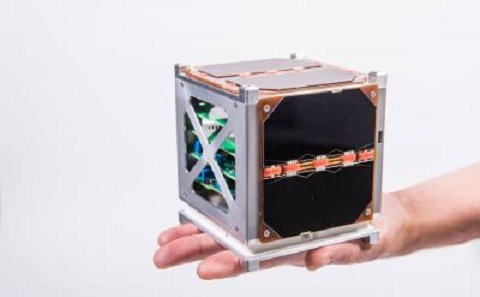University small satellite moves one step closer to space flight

A miniature cube-shaped satellite built by students from the University of Southampton has won the backing of the European Space Agency (ESA) in its bid to improve space debris models.
The UoS3 satellite, the result of a cross-university collaboration including a group project from the Department of Physics and Astronomy, is one of just six projects chosen by ESA to receive expert support and access to test facilities as part of its educational Fly Your Satellite! programme.
If the satellite passes these stages it may then be eligible for a launch, making Southampton one of the first UK universities to launch their own satellite. The small satellite, or CubeSat, measuring just 10cm wide, was the only UK university project to win ESA's support in the competition.
Students from Physics and Astronomy have contributed to UoS3 through a Group Design Project (GDP) supervised by Dr Robert Fear. The project focused on the calibration of a magnetometer that is used to determine the orientation of the satellite. It is hoped that data from this magnetometer will be used in future MPhys projects.
Dr Robert Fear, a member of Southampton's Astronomy Group, says: "It is a fantastic development in this ambitious project that is has been selected by the European Space Agency. The technical achievements of the UoS3 satellite are testament to the potential of collaborative working in a programme that continues to be a wonderful opportunity for students working in space-related areas across the University."
Once launched, the satellite will orbit the Earth at a height of 400km and gather data that will be used to improve re-entry predictions for space objects.
During its year in orbit, students will monitor the satellite's 'health' and receive pictures and scientific data through a ground station. The data will be used to improve space debris models, for which the University is a recognised global leader.
Senior research assistant Clemens Rumpf, who started the project with former PhD student Aleksander Lidtke, adds: "It's an amazing achievement and a great honour for the University to be one of just six projects chosen for the ESA Fly Your Satellite! programme. The opportunity to work on a real space mission has been an invaluable one for our students. CubeSat holds significant potential to facilitate research across the University, and we are just starting to explore the possibilities this project is opening up for us in terms of research and collaboration."
Find out more about the UoS3 project .